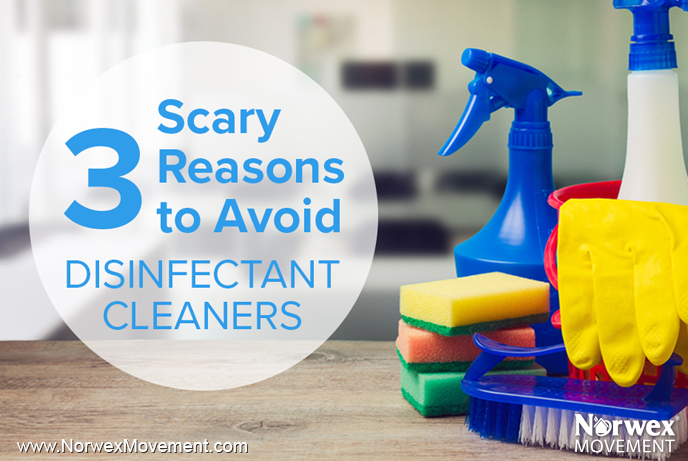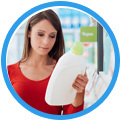

Disinfectant cleaners seem to be an easy solution for wiping up messes in the kitchen, the bathroom and even in the classroom. In fact, disinfectant wipes have been on students’ school supplies lists for some time now.
However, as new research emerges, it seems that these disinfectant solutions aren’t as innocent as they appear. WCVB news reported that a Massachusetts agency urged elementary schools to refrain from using cleaning wipes in the classrooms for fear that children are being exposed to harsh chemicals.
If you’re unsure whether it’s time to ditch your cleaning wipes, check out these three reasons to consider limiting the use of disinfectants in your home.

Check the back of disinfectant cleaners for a list of ingredients to search for chemicals called quaternary ammonium compounds, also known as “quats.” These compounds have been known to irritate skin and lungs. Disinfectants containing these chemicals most often include a warning stating to keep out of reach of children.

It’s important to remember that there is a very big difference between cleaning and disinfecting a surface. Bacteria can be removed from a surface without resorting to the use of harmful chemicals to kill them. The overuse of disinfecting chemicals can actually promote antibacterial-resistant bacteria, also known as superbugs. Though it hardly needs to be said, superbugs are not good for your family.

Products labeled “antibacterial” actually aren’t better for you, and the U.S. Food and Drug Administration recently banned several antibacterial ingredients, including triclosan, which has been shown to interfere with hormones in animal studies.
The next time you’re reaching for a cleaning wipe after cooking dinner for your family, give these facts a second thought and decide if a disinfectant is really needed. But how can you avoid too much contact with harsh chemicals? Here are a few options.

Did you know that most disinfecting cleaners suggest washing your hands with warm water and soap after each use? Just be sure to lather up with plain soap and water and skip the triclosan-laden “antibacterial” soaps.
Resources:
So one of my favorite all natural cleaners is diluted grapefruit seed extract oil. It disinfects so well. In fact they use it to wash off pesticides off of fruits and vegetables. You can get it online or at the health food store.
I became a Norwex distributor in September of this year and no longer use chemicals in my home! I love my Norwex Microfiber cloth!
I always point out the directions at my demonstrations. Some people have NO idea about the 4-10 minute direction.
I was a wipes fanatic before Norwex and was appalled to actually read the label and learn I was doing it all wrong. This is now something I always mention to people who love their wipes and I have yet to find someone who knows the proper way to use them!! What a waste of time and money when an enviro cloth can do the job the first time every time!
Norwex products have made my home chemical free of cleaning products.
I am shocked school still recommend wipes. I will be supplying my kids teachers with Norwex samples.
Good info! Thanks for sharing!
I’m new to this. but I have to ask because I have seen it yet. Do they list ingredients on the products?
correction!!! I HAVE NOT seen ingredients listed on the products.
Hi Crystal. Which products are you referring to?
I encourage people to read the label on their cleaning products. Once they are aware, they will definitely choose to switch to Norwex!
I love my norwex products so
much that I’m a Norwex consultant.
My allergies have been much better since I’ve gotten the chemicals out of my home.
I love lemon essential oil for my glass stove top and it smalls so good.